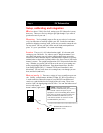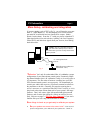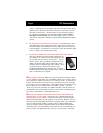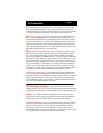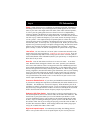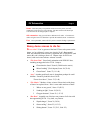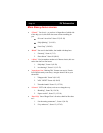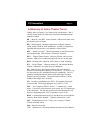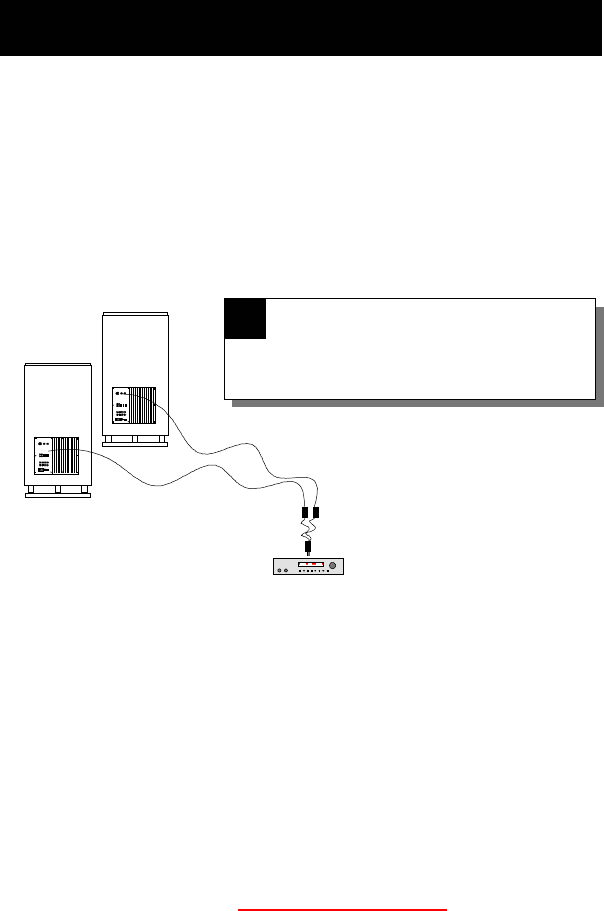
If you are running a pair of SVS’s (fig. 2), you will need to use a stan-
dard “Y” cable adapter (c.) The best adaptor to use for this task has
one male RCA connection and two female RCA outputs. (Radio
Shack ® stocks them.) From the “Y” cable you can run a standard 75
Ohm signal cable (d.) to each sub thus “splitting” the Low Frequency
Effects (LFE) and other bass signals from your receiver, thus feeding
both subwoofers.
“
C
alibration”
isn’t only for tech minded folks, it’s
critical
to a proper
configuration of your home theater sound system. Fortunately, adjust-
ing channel balance (that’s all “calibration” really is) is as easy to do as
it is important. The first order of business is making sure your DD/
DTS surround sound system is set up properly. We recommend you
consult your audio/video receiver (or processor) manual to refresh on
the procedures to do this. Generally, this requires ensuring the re-
ceiver’s test tones, or a special test disk (like
Video Essentials or Avia
)
plays back at the same volume from each of your system’s full range
speakers. That’s left, center, right, left surround and right surround
speakers, and of course the subwoofer . (More on sub level in a sec-
ond). Skip now to page 7 (“
PC-Plus: Amp Features
”) if you aren’t
familiar with your sub’s amp, and come back to calibration.
S
ome things to check as you get ready to calibrate your system:
•
A
re your speakers set correct to the correct “size”?
Your receiver/
processor might allow you to indicate if your speakers are “Small” or
Page 5
More Setup, calibrating and integration
SV Subwoofers
Fig. 2
(d.)
(c.)
“Y” cable/splitter from
receiver
NOTE: Now is a good time to select if
you want “ON” (always on) or “AUTO
ON” which turns your sub on only when a bass
signal is present.
!
DD/DTS Processor/Receiver
(Subwoofer “Out”)






